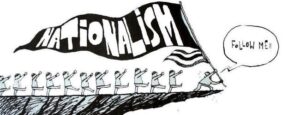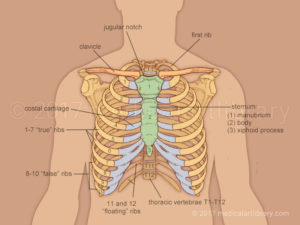Back to: Physical Health Education SS1
Welcome to today’s class!!
We are thrilled to have you in our class!!
In today’s Physical and Health Education class, we will be focusing on Revision
Revision
We are finally getting closer to that time of the year where your knowledge of what you have been taught so far is tested. Not to fret! This is why revision is important! Let’s rewind to some of the topics we learned from our previous classes.
Philosophy of Physical Education

When we talk about the philosophy of physical education, we are referring to those things serving as the foundation and guidelines in physical education. Just as we have guidelines in all aspects of life ranging from religion to moral values, and so on, the philosophy of physical education is an aspect of philosophy that seeks to analyze issues of sport and physical activities as human activities. These issues cover many areas, and can often include aesthetics. The philosophical perspective on physical education originated in Ancient Greece, having experienced a revival in the end part of the 20th century with the work.
A philosophical perspective on physical education incorporates its metaphysical relationships with art and play, ethical issues of virtue and fairness, and more broadly sociopolitical.
It is incomplete to talk about the origin of physical education without talking about the ancient Greece and Spartans which championed competitive sports in both boys and girls and among countries. As a result, we now have sports activities within countries and internationally.
Ancient Greece is considered the birthplace of both ancient philosophy and Olympic sport. Hellenistic philosophies hung great significance on athletic performance. A leader’s athletic prowess, according to history, reflects their ability to lead. (Games of the Phaeacians in Homer’s Odyssey) The sport was seen as an epistemic inquiry, a methodological process by which we learn the objective truth of a person’s athletic potential by actualizing it in athletic competition.
Athletics as a measure of individual worth was seen as a cure for social inequality. The sport was even seen as moral education, with Plato advocating the participation of women in sports for their moral enrichment. Aristotle emphasized physical activity as an ethical responsibility.
Ethical issues in the philosophy of physical education predominantly center on athlete behavior about rules of the game, other athletes, spectators, external factors such as socioeconomic issues among supporters and communities, and issues of using drugs while participating in sports, which is also referred to as doping.
Issues of doping in sport focus on the ethics of medical intervention on athletic performance: what is acceptable versus what is not, and how boundaries can be drawn.
Particular attention is given to the question of what factors ought to be taken into consideration when banning certain medical interventions.
In summary, the philosophy of education holds its origin in Ancient Greece, having experienced a revival in the end part of the 20th century with the work. For this cause, physical education incorporates its metaphysical relationships with art and play, ethical issues of virtue and fairness, and more broadly sociopolitical.
Concept of The Whole Man
The concept of the whole man in Physical Education is a unique concept that emphasizes the significance of the mind and body. Since man’s existence relies on how much the mind and body are well taken care of, it is therefore described as the concept of the whole man.
Take the concept personally as this talks about you as well as every human. Let’s learn!
Did you know that a healthy mind starts with a healthy body? Being healthy is what allows students to apply themselves fully in the classroom, uninhibited by conditions that could potentially pose a hindrance to the learning process.
Because exercise is a fundamental part of maintaining wellness, incorporating physical activity into our school day and after-school programs ensures students are healthy.
The mind consists of mental states such as thoughts, emotions, beliefs, attitudes, and images. The brain is the hardware that allows us to experience these mental states.
Awareness of the mind-body connection is by no means new. Until approximately 300 years ago, virtually every system of medicine throughout the world treated the mind and body as a whole. But during the 17th century, the Western world started to see the mind and body as two distinct entities. In this view, the body was kind of like a machine, complete with replaceable, independent parts, with no connection whatsoever to the mind.
The mind-body connection is real, and it has a powerful impact on our well-being at every level.
Now, let’s look at the importance of Mind and Body
A healthy mind encompasses emotional, psychological, and social well-being. It impacts how we think, feel, and act.
A healthy mind offers several benefits:
- It helps us to cope with the challenges we face.
- It helps us to recover from bad experiences.
- It prepares us mentally for any unfortunate or sudden events.
- It brings a positive attitude.
These benefits generate feelings of hope and confidence, which in turn can boost mental health as a feedback loop. If the mind is not healthy, however, the person may become vulnerable and face difficulties in handling stress or stressful situations.
In summary, the mind and body are two different entities. However, they are densely interconnected. For example, if the mind is not well or calm or at peace, the person will also experience dullness in the physical health of the body.
Physical Education Ideologies
Being around the elderly or religious leaders will often make you hear them talking about the Ideologies in life. So don’t be surprised when you hear saying this is my ideology!
However, when we talk about Physical Education Ideologies, we are referring to Nationalism and Patriotism.
Why is this so? Let’s find out!

Nationalism and Patriotism are often intertwined, as sports provide a venue for symbolic competition between nations; sports competition often reflects national conflict and has often been a tool of diplomacy. The involvement of political goals in sport is seen by some as contrary to the fundamental ethos of sport being carried on for its own sake, and for the enjoyment of its participants, but this involvement has been true throughout the history of sport.
Patriotism is the idea of believing in your country. Patriotism in sports can take place internationally, or simply be an event large enough to bring the entire country together.

The idea of Patriotism and Nationalism also has its roots in the philosophy of physical education.
As we previously learned, the philosophy of physical education is an aspect of philosophy that seeks to analyze issues of sports and physical activities as human activity. These issues cover many areas, and can often include aesthetics. The philosophical perspective on physical education originated in Ancient Greece, having experienced a revival in the end part of the 20th century with the work.
A philosophical perspective on physical education incorporates its metaphysical relationships with art and play, ethical issues of virtue and fairness, and more broadly sociopolitical.
Ancient Greece is considered the birthplace of both ancient philosophy and Olympic sport. Hellenistic philosophies hung great significance on athletic performance. A leader’s athletic prowess, according to history, reflects their ability to lead. (Games of the Phaeacians in Homer’s Odyssey) The sport was seen as an epistemic inquiry, a methodological process by which we learn the objective truth of a person’s athletic potential by actualizing it in athletic competition.
In summary, Patriotism and Nationalism are everywhere. A jam-packed stadium, filled with fans observing the same incredible spectacle is a powerful event to observe.
Importantly, the idea of Patriotism and Nationalism also has its roots in the philosophy of physical education.
The Skeletal System

The skeletal system is your body’s central framework. It consists of bones and connective tissue, including cartilage, tendons, and ligaments. It’s also called the musculoskeletal system.
The skeletal system has many functions. Besides giving us our human shape and features, it:
- Allows movement: Your skeleton supports your body weight to help you stand and move. Joints, connective tissue, and muscles work together to make your body parts mobile.
- Produces blood cells: Bones contain bone marrow. Red and white blood cells are produced in the bone marrow.
- Protects and supports organs: Your skull shields your brain, your ribs protect your heart and lungs, and your backbone protects your spine.
- Stores minerals: Bones hold your body’s supply of minerals like calcium and vitamin D.
In summary, the skeletal system is a network of many different parts that work together to help you move. The main part of your skeletal system consists of your bones, the complex structures that create your body’s framework — the skeleton. There are 206 bones in an adult human skeleton.
We hope you enjoyed today’s class. In our next class. You’ve got this subject, go ace it!
Let us know your thoughts and questions in the comment section, and we will attend to them as fast as we can.
